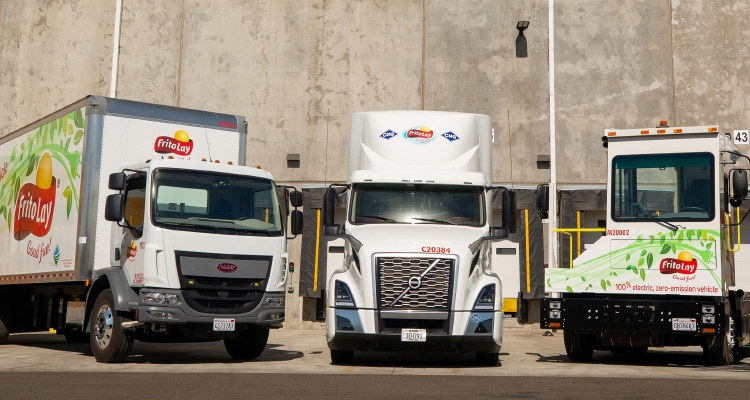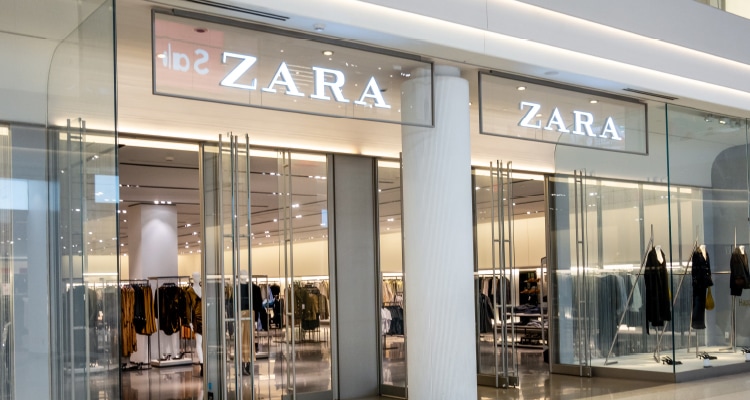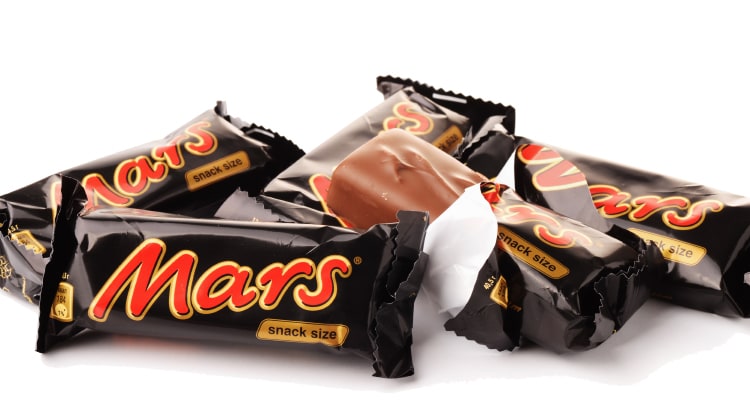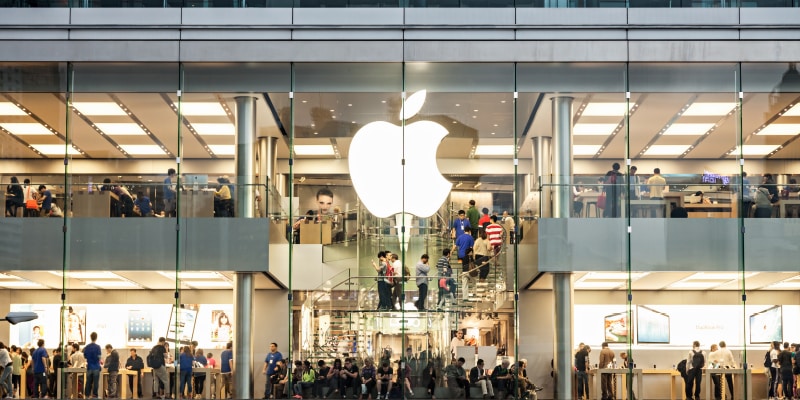The Secrets Behind Today’s Leading Supply Chain Companies

In today’s globalized world, supply chains are the unseen arteries pumping lifeblood into every industry. But behind the seamless delivery of everything from your afternoon candy bar to the latest iPhone lies complex supply chain strategies that incorporate innovation, efficiency, sustainability, and resilience. Here’s a behind-the-scenes look at four of the best supply chains operating today.
PepsiCo Pops the Top on a Streamlined Supply Chain

PepsiCo built its success on an efficient and robust supply chain strategy that ensures its beverage and snack products are always available on store shelves.
As the world’s second-leading beverage and snack food company, PepsiCo’s streamlined supply chain strategy is a key aspect of the company’s success.
To maintain steady growth, PepsiCo has focused heavily on acquisition. The soda giant has become much more than its signature drink; it now owns Frito-Lay, Gatorade, Tropicana, Lipton, and Quaker Foods, among other brands.
With so many brands under its umbrella, it has mastered supply chain operations and production processes and has even aimed for sustainability measures along the way.
Managing the Flow
As a vast, multinational company, Pepsi must input, analyze, and act on an enormous amount of data to properly manage the flow of its food and beverage products—each with its own specific needs. For instance, some products require cold chain logistics, while others involve sourcing ingredients from multiple regions around the world.
In addition to coordinating numerous suppliers, manufacturers, shippers, warehousing managers, and retailers, PepsiCo’s supply chain strategies also must account for potential disruptions.
These disruptions to the supply chain could be for a variety of reasons, such as seasonal sourcing requirements, weather and climate change, and shifts in demand. Regardless of what happens, the company needs an on-time delivery network to get products on store shelves.
PepsiCo has been increasingly focused on investing in digital tools and advanced technologies to create a more efficient, streamlined supply chain.
Specifically, the company is zeroing in on data integration to create a clearer picture of the individuals and households buying PepsiCo products. Not only could this help the business meet consumer demand in the short term, but it could also allow for better long-term strategizing and forecasting.
More sophisticated data analytics also helps PepsiCo’s distributors and retailers track inventory. By improving ordering algorithms, stores can put in much more accurate orders, accounting for sales histories and purchasing trends. This helps create a streamlined, cost-efficient chain.
Dealing with Disruptions
PepsiCo is used to dealing with supply chain disruptions; as a major international corporation, natural disasters are par for the course. But the pandemic was something else entirely that completely flipped the supply chain process on its head all across the beverage industry.
To ensure a streamlined, efficient supply chain, PepsiCo taps into lean methodologies—but during the pandemic, every link in its supply chain was being tested.
For global actors such as PepsiCo, the crisis presented unique challenges and opportunities to identify areas for improvement. Going forward, PepsiCo may choose to keep more inventory on hand, allowing for quicker responses in the event of future disruptions.
Zara Fashions a Responsive Supply Chain

Zara carries about 11,000 distinct items per year in thousands of stores worldwide compared to competitors that carry 2,000 to 4,000 items per year in their stores. A highly responsive supply chain is central to the retailer’s business success.
Operating nearly 3,000 stores around the world and present in 96 countries, with European stores making up a large percentage of this, Zara is one of the world’s leading fashion retailers.
While the clothing giant’s success can be accredited to various factors—from its keen eye for emerging trends to its laser-sharp focus on customer experience—its highly responsive supply chain is what gives Zara its competitive edge and intriguing business model.
Just-in-Time Production
This fast fashion business model is easy to see in action. Walking into Zara stores makes it evident. In a matter of weeks, shoppers will find fresh floor designs and new clothes that weren’t available for purchase several days prior.
The company manages to stay ahead of the trends thanks to a constant flow of new goods that come about through its supply chain strategies. Zara changes its apparel designs every two weeks on average; most of its competitors and other fashion supply chain giants do so every 10 to 14 weeks.
To maintain this lightning pace, the fast fashion retailer utilizes just-in-time (JIT) production methods to keep turnaround times as tight as possible.
JIT production is a lean strategy that centers on eliminating waste from business processes to allow for a highly efficient, streamlined system. This, in turn, enables companies to meet customer demand immediately.
Zara manufactures a large quantity of clothes and accessories for stores worldwide but avoids excess inventory by creating urgency for shoppers by insinuating—and proving—that the items they see now won’t be around for long.
Manufacturing In-House
One pillar of Zara’s supply chain strategy is investing in in-house production processes. These allow for greater flexibility and better oversight, reducing the risk of errors, delays, and inefficiencies.
To achieve this, Zara does much of its production in-house. Many of their factories are located near the company’s Galicia, Spain, headquarters, so it doesn’t need to outsource distribution centers or production facilities. It also maintains about 85% of capacity for any necessary in-season adjustments—allowing for greater flexibility and agility in how and when new items are launched.
The Harvard Business Review calls this “rapid-fire fulfillment” and the retailer cuts down on waiting time by removing outside suppliers and steps that cause delays to its products getting scooped up by buyers. Zara has its finger on the pulse of nearly its entire supply chain model.
Automating in-house production can make a huge difference in getting products manufactured and out the door as quickly as possible while increasing accuracy.
This also allows the brand to stay on top of the latest fashion trends and gives them a competitive advantage. Any supply chain model that relies on external factory processes can experience delays. In-house automation puts an end to this.
Zara also leaves time for the factory to complete more menial tasks. For example, rather than having store managers or employees add tags in retail stores, they do this in-house.
Another method that contributes to Zara’s success is producing products in limited or smaller quantities. This lends an air of exclusivity and urgency to the shopping experience, helping to push customers to purchase.
The brand also creates clothes based on the latest trends. This adds another layer of fear of missing out. If shoppers don’t pick up on the current trends happening now, they’ll miss the boat.
Rethinking Returns
In 2022, Zara made a game-changing decision, much to the chagrin of shoppers. It decided to charge $3.95 for returns that are shipped back; in-store returns would still be free. This alleviated the notion for many brands that they would have to continue offering free returns—a major expense—and would hopefully encourage buyers to consume more mindfully.
Artificial Intelligence
Zara uses artificial intelligence (AI) for operations management. It processes sales data, pins down inefficiencies, and is vital in inventory management that’s tracked through chips used in its tags.
Zara manufactures various sizes and fits, and is able to use AI to help customers with finding the right size and understanding how a particular garment will look. It integrates services like Fit Analytics to narrow down options for shoppers, which results in fewer returns and positive customer feedback.
Zara has also tapped into vertical integration to keep its supply chain running smoothly. By acquiring businesses at different stages of the chain, Zara is able to maintain better control of the value chain, which means it can react quickly to shifting consumer demands.
Relying minimally on outsourcing, Zara controls everything from design to display to shipping, allowing it to gather valuable data at every stage. They can then analyze this data to identify inefficiencies, pinpoint areas of success, and create accurate forecasting.
Vertical integration also helps the retailer reduce risk, provide greater transparency to customers, and lower distribution costs. And because Zara is able to maintain control and oversight throughout the entire supply chain, better communication and collaboration between different partners can be achieved as well.
In 2023, Zara’s supply chain strategies became even more distilled, focusing on finer details such as the purchasing process in Zara stores, what store managers and employees are responsible for as opposed to shoppers, and how sizing works (a common pain point for the fashion industry in particular).
Zara invested in tech that’ll enable the brand to cut out the use of hard security tags, boost the digital experience for existing stores and focus on improving its size recommendations tech.
Mars Sweetens the Candy Supply Chain

As the confectionery industry continues to grow, Mars has transformed its logistics operations by employing several technological advancements, such as specialized software, robotics, and pneumatic equipment.
Many Mars products, including Mars bars, Milky Way bars, M&Ms, Skittles, and Twix, continue to be popular with candy fans around the globe.
Maintaining a competitive edge is crucial to standing out in the candy market—something Mars has done consistently for over a century.
Given the sustained success of Mars Inc., it should come as no surprise that innovative supply chain and logistics measures have played a major part in keeping them ahead of the curve.
Supporting the U.S. Economy
In March 2017, Mars announced it would invest more than $70 million in its U.S. supply chain. This investment ensured that more than 95% of candy products sold in the U.S. are manufactured locally. In October 2018, the company followed up with a $142 million investment in its Cleveland-based plant and another $31 million investment in its New Jersey plant in 2021.
In 2022, Mars invested $175 million to expand its chocolate candy plant in Topeka, Kansas, to boost production of chocolate like Milky Ways and 3 Musketeers.
What’s Ahead for Mars?
Increased Transparency. Growing consumer distrust continues to be a major concern for many companies in the Big Food industry. In a 2021 survey, 90% of consumers said that transparency is important to their purchasing decisions. Throughout its century-long existence, Mars has gained a reputation as one of the most secretive companies in the United States.
Over the past few years, however, Mars Inc. has made a conscious effort to be more outspoken. This shift came as a response to changing consumer behavior. The company also agreed to increase transparency amid increasing demands for research around health, sustainability, and food safety. In addition to increased trust and brand awareness, the company is improving its transparency as a means to attract talent, as workers are more likely to gravitate toward companies with a strong mission.
Enhanced Automation. In light of the expected growth of the confectionery industry, Mars has been working to completely transform its logistics department by employing several technological advancements, such as specialized software, robotics, and pneumatic equipment.
In its confectionary business, Mars uses artificial intelligence in its sensors on the manufacturing line to boost speed and accuracy. In 2021, Mars also partnered with Microsoft to develop a digital twin of its supply chain to “help simulate scenarios that would be too difficult to test with physical assets.”
The company also utilizes AI to check in on its supply chain and how the weather is impacting its production; specifically monitoring fungus that may hurt its raw material in India and Africa.
Sustainability. Increased attention to climate change and other environmental concerns has changed the way customers view their purchases. In September 2018, Mars launched its “Cocoa for Generations” campaign as part of its “Sustainable in a Generation” plan with the goal of “fixing the broken cocoa supply chain.”
Under this new sustainability initiative, the company aims to combat issues currently plaguing cocoa harvesting operations, including child labor, deforestation, and poverty.
As a result of this plan, estimated to cost the company $1 billion over 10 years, Mars says all of its cocoa will be responsibly sourced by 2025. In 2021, Mars also pledged to achieve net zero carbon emissions across its full value supply chain by 2050.
Biting into the Apple Supply Chain

Apple prioritizes customer satisfaction in its supply line and its retail stores offer personalized shopping. The company also prioritizes a strong logistics network to ensure products reach stores quickly.
In the supply chain sector, Apple is widely regarded as an innovative leader, providing inspiration for other brands and forcing the competition to keep up to the same standards with their supply chains, or risk falling behind. But how does Apple manage to always stay at the top in this regard?
Strong Supplier Relationships
By focusing on maintaining strong relationships with its supply chain partners, Apple can provide great flexibility in response to demand surges. This, paired with Apple’s large production capacity, allows the company to provide products when and where customers want them, and accounts for much of Apple’s success.
The company maintains strict standards for its numerous supplier companies, which are named each year in Apple’s Supplier List. The top 200 businesses in this list make up 98% of the business’s procurement.
Demanding high-quality service from suppliers helps ensure the final products are reliable and long-lasting.
Since Apple consistently innovates, its suppliers enjoy a degree of stability; even if one Apple product doesn’t succeed or suffers from setbacks, suppliers can rest assured that another request for another product will likely be coming down the pipeline.
Although the efficacy and efficiency of outsourcing production of finished products have come into sharper focus in recent years, Apple provides proof that it can be a sound strategy. Although Apple has diversified its supply chain in recent years, the company outsources much of its manufacturing to China, which has provided them with the revenue needed to launch new and updated products very quickly over the years.
Operating and maintaining a lean and streamlined inventory management system is especially important in the tech industry, where new items can practically eliminate consumer interest in older models.
Apple keeps as little inventory as possible, providing them with the agility they need should a competitor release an innovative new product, thereby decreasing the value of any items in stock at that moment. Furthermore, having fewer SKUs to keep track of allows for more accurate forecasting.
Sustainability Focus
Apple has introduced various initiatives throughout the years to improve sustainability across the supply chain. In 2020, for example, Apple announced its goal of creating a closed-loop supply chain, meaning that eventually every product would be made solely from recyclable or renewable products.
Today, every one of its global facilities is powered by renewable energy, while newer products, such as the MacBook Air, are made from 100% recycled aluminum. The company has also invested heavily in a mix of clean energy technology, such as solar and wind. Its online Clean Energy Portal allows suppliers across the globe to identify renewable sources.
After publicly announcing its plans for a completely carbon-neutral supply chain by 2030 a few years ago—and already reaching a carbon-neutral status for its global corporate emissions—Apple provided an update in early 2023 and explained that its manufacturing partners now globally support more than 13 gigawatts of renewable electricity. This comes at an almost 30% increase over the previous year.
(Source: Thomas Insights)
